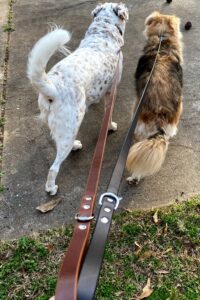Bringing a new dog home is exciting for the whole family and the puppy! But this does not mean that he will not be a little nervous at first. In order to provide some suggestions for making new pets comfortable in their new home, we talked with , a veterinary behaviorist, and Shelby Semel, a and behavior expert based in New York who can give you some advice to introduce dogs. They shared advice on how to make the transition as seamless as possible from the first night in the crate to how to deal with the first accident.
Take it easy and slow

Keep in mind that everything is new for your pet right now, from a different house to a new neighborhood, and sometimes you can be in a new city also. There are a lot of changes both for you as well as for your dog. Thus, it is very important to take it one step at a time, letting your dog get used to this new environment. Each dog is different and under certain circumstances, they can behave differently to change. It is wise to spend even more quality time with your dog in the first few weeks after moving. This will help your pet be reassured you are here with them and you are experiencing this fun, new adventure together as a family.
Meeting your resident dog

Sometimes a family unit grows bigger in the process of a move, and if you already have a resident dog in your house, an introduction of a new canine member can be stressful to both of them. Many times when moving or getting married, the new partner may bring their pet to add to the family unit. This can be quite a challenge at the beginning and the need for patience is high in this case while the two dogs get acquainted with each other and with the new household. Thus it is important to take everything slow and let all parties involved adjust to the new environment a little better.
If you need to know how to introduce your dog to a new home and neighborhood because you are adopting a new dog from a shelter, you have to keep in mind that these dogs’ mental conditions may be different. The shelter’s environment can be very triggering for the dogs, and it does affect their mental state. So take it easy and have some down time to allow them to settle in, because adjusting to a new environment takes time.
If you are introducing a new dog, try to keep your resident dog on a leash. You can take the two dogs on a walk to explore the backyard at first and introduce them to their new space together and to each other. Walks will be important to keep them both healthy, well exercised and feeling loved. This gives you a chance to bond with both of your dogs and helps them adapt more easily to their new home and each other.
Tips to help your dog decompress
- Forget expectations: You and your dog are unique, so don’t compare it to others. The process of introducing your dog to this new environment can take time.
- Take your time: Ease yourself into the situation. It can take four to six weeks for your dog to get comfortable.
- Stay calm.
- Give them space: Create a den or safe space for your dog.
- Crate train: A crate is an easy way to create a safe space for your dog.
- Keep them on a leash.
- Introduce your dog to new visitors and new home slowly.
- Give your dog ample exercise: A good dog is a tired dog. Regular walks are good for you and your dog. And walking allows your dog to bond with you. It is also a great way to get your dog comfortable with new people and other dogs.
- Keep a routine: Dogs thrive on routine. So even if you are in a new environment, keep your routine in place as much as possible.
- Establish positive associations: You want your dog to feel like this new place is wonderful. So have plenty of treats ready. So you can make this time a positive experience.
Make sure to tour the new neighborhood when you introduce your dog to a new home

After moving in, look for nice places to take your pet on a walk and try to explore your neighborhood as much as possible. Walking through the neighborhood you will find out about your new neighbors, other dogs in the neighborhood, children, etc. It’s important to figure out these things so that you can help your dog get accustomed to the new environment. Try introducing your dog to the new neighborhood gradually visiting one side of the neighborhood at a time. This will allow him to explore, sniff around and be curious, but not at an overwhelming rate as in trying to take in the entirety of the whole neighborhood at once. Remember to always keep your dog on a leash as there might be some aggressive dogs, or children out playing and you’ll want to be prepared for how your pet may react.
You have to keep your dog safe and others also. As mentioned earlier, all dogs are different, thus they would behave differently. Some might become timid and some might show aggressive behavior. This makes it even more important to watch your dog carefully, and if you notice any aggressive behavior, attempt to dissolve it quickly. If they are shy or timid try to encourage them, but let them take their own time getting comfortable with their new environment. Be patient and let your dog adjust on its own. Gradually your dog will feel more and more comfortable and ready to run around at a local dog park or while out on walks with you in the neighborhood.
Ways to create a familiar environment for your dog

Dogs can adapt to a new environment fairly easily, but still, some dogs, if they are rescued or are coming from the shelter or some other environment, may take a little time. You don’t know what they have gone through. So give them some time to get acquainted with the new environment. Gradually they will start accepting and enjoying the new house. You can make it easier for your dog, by making your house pet proof.
While moving into the new house, try to introduce your dog to a designated place to eat, keeping their bowls there on a regular basis. Also, try to follow any old routines with your dog, which will help them reduce their anxiety of change. Knowing dogs have a superpower sense of smell, you could introduce a familiar scent in the new environment to help them quickly get acquainted with their new living area. Finally, check any animal hospitals nearby so you are aware of their locations in case of emergency. These helpline numbers should always be kept handy.














